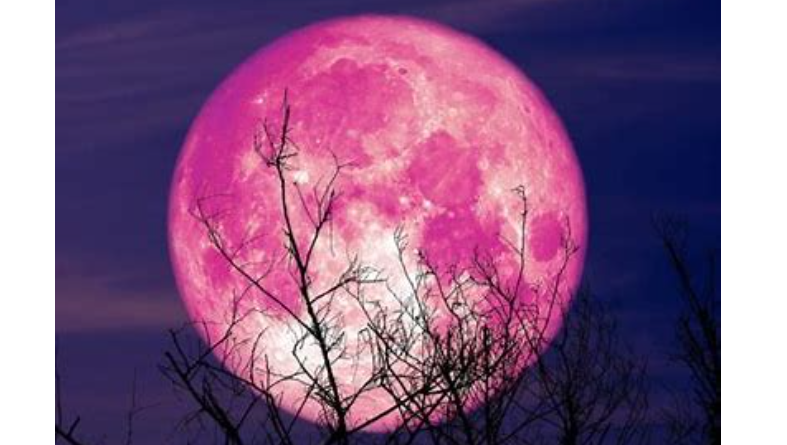RISE OF THE ‘PINK MOON’ – Nick Name “Breaking Ice Moon”
Saturday night will be a great opportunity to step outside and soak in beautiful views of Earth’s celestial companion as the full moon rises around the globe.
The upcoming full moon will be the first of astronomical spring for the Northern Hemisphere. The most recent moon was the Worm Moon which shined brightly on March 18, just two days before the changing of the seasons on the March equinox.
April’s full moon takes on several nicknames related to the changes that take place outdoors during the spring.
The Pink Moon, the most common nickname, is derived from the wild ground phlox which blooms in the spring with pink flowers, according to the Old Farmer’s Almanac.
Despite its name, this weekend’s full moon will not appear pink in the sky throughout the night. However, the moon can sometimes appear a different color when it is low on the horizon depending on atmospheric conditions similar to how the sky changes color around sunrise and sunset.

Another nickname for the April full moon is the Breaking Ice Moon as the ice that formed on lakes and ponds during the winter months melts and breaks apart during the early spring. Other nicknames include the Frog Moon due to the return of the amphibians amid milder spring weather and the Budding Moon as plants develop new leaves ahead of summer.
Folks that spend some time outside this weekend soaking in views of the full moon should also keep watch for stray shooting stars.
The Lyrid meteor shower peaks during the second half of next week, and some early meteors associated with the shower are likely to streak across the night sky this weekend.
Hourly rates this weekend may top out at about five meteors per hour, but that number will gradually increase to around 20 per hour leading up to the peak of the Lyrids on the night of Thursday, April 21, into the early morning of Friday, April 22.





